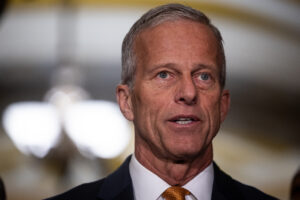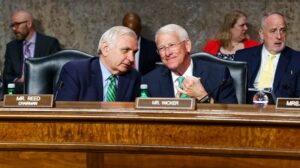The Dictatorship
Agreement between Trump and Xi turns back the clock
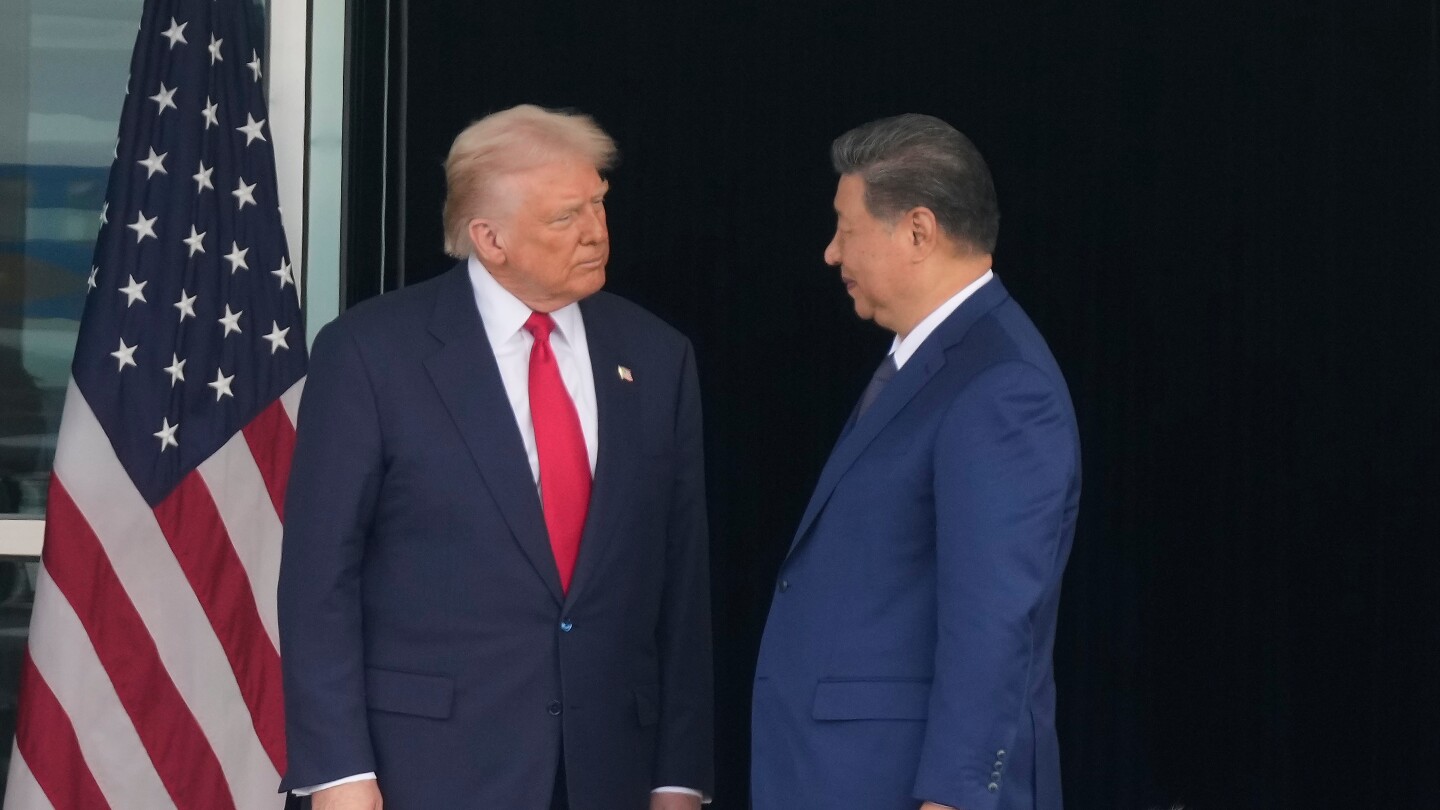
BUSAN, South Korea (AP) — Three-digit tariffs are off the table, but import duties on each other are higher than in January.
Rare earth materials will flow more smoothly, but China has put in place an export permitting regime that it can tighten or loosen as needed.
Port fees will go away, but only for one year.
And Beijing is again buying U.S. soybeans after it had abruptly cut off American farmers.
After months of posturing, arguing and threatening, U.S. President Donald Trump and Chinese leader Xi Jinping have essentially turned back the clock. While the meeting between the two leaders was hailed by Trump as a “roaring success,” the agreement that came out of it may only serve to undo some of the damages Trump inflicted with his trade war upon his return to the White House.
“It is hard to see what major gains the U.S. has made in the bilateral relationship relative to where things stood before Trump took office,” said Eswar Prasad, an economist at Cornell University.
On the Senate floor, Minority Leader Chuck Schumer on Thursday denounced the deal out of South Korea as leaving the U.S. as “no better off.”
“If anything, things are worse: Prices have gone up and China has agreed to nothing of substance that will improve trade between our nations,” the Democrat senator said, adding that Trump “started a trade war, created a giant mess for businesses, consumers, and soybean farmers, and then he celebrates for trying to clean up the very mess he created in the first place.”
Stay up to date with the news and the best of AP by following our WhatsApp channel.
Nevertheless, the deal has injected a degree of stability, giving the world’s two largest economies — as well as the rest of the world — time and room to readjust.
Washington and Beijing still need to finalize their agreements, a process that always has the potential for fresh disputes. But for now, Xi appears interested in moving past the latest tensions.
In an official statement, Xi referred to “recent twists and turns” that “offered some lessons for both sides.” He said they should be “focusing on the benefits of cooperation rather than falling into a vicious cycle of mutual retaliation.”
Both sides reduce tariffs, resume soybean sales to China
Trump fired the first shot in the trade war in February when he imposed an additional 10% tariff on Chinese goods over the allegation that Beijing failed to stem the flow of chemicals used to make fentanyl. That soared to as much as 145% after China retaliated, but Trump walked it back following market meltdowns.
The two sides in May slashed their massive tariffs to 10% on each other, while Washington retained the 20% fentanyl-related tariff, and China its retaliatory tariffs of 10% or 15% on U.S. farm goods.
Now, Trump said he has removed one 10% fentanyl tariff in exchange for Beijing’s cooperation in fighting the illicit drug.
U.S. Secretary of Agriculture Brooke Rollins said China would also withdraw the retaliatory tariffs on U.S. agricultural products. A spokesperson for the Chinese Ministry of Commerce said Beijing would “adjust accordingly” its countermeasures without giving details.
In addition, China has agreed to buy 12 million metric tons of U.S. beans through January, and will buy at least 25 million metric tons annually for next three years, Rollins said on Thursday.
That compares to China buying 17 million metric tons of U.S. soybeans in the first eight months of this year but importing zero in September. In 2024, China bought 22 million metric tons of U.S. soybeans, according to state media.
Although China did not confirm the details of the latest soybean deal, the spokesperson for the Chinese commerce ministry said the two sides have reached “consensus” to expand agricultural trade.
One-year truce on export controls and port fees
In April, China used its monopoly power in the processing of critical minerals to institute a permitting requirement for the export of several rare earth elements. On October 9, Beijing expanded the export rules, apparently in response to the U.S. decision to extend export controls to businesses affiliated with already-blacklisted foreign companies.
Furious, Trump threatened to impose a new 100% tariff on China, but the two sides managed to cool down in time for Trump to meet Xi in South Korea.
Beijing on Thursday said it would pause for a year the rare earth export rules from October to “conduct research to refine specific plans,” while the U.S. will suspend its affiliate rule for one year.
The delay by Beijing “provides just enough time for the United States to accelerate investment in capabilities and innovation for rare earths and permanent magnets,” said Wade Senti, president of the U.S. permanent magnet company AML. “This needs to be on warp speed and at a scale never seen before since the COVID-19 response,” he said.
Another fresh thorn was the U.S. introduction of port fees in October targeting China-linked vessels, as part of a plan to restore America’s shipbuilding capabilitie s. Beijing answered with countermeasures against the U.S.
The port fees on each other are not removed but will be suspended for one year, the Chinese commerce ministry said.
The future is still uncertain
Whether Trump accepts a return to the status quo or pushes to address fundamental issues that have persisted for years between the U.S. and China remains unclear. Nothing about Thursday’s meeting — the first between Trump and Xi in six years — affects Chinese manufacturing dominance that Trump has blamed for the loss of American blue collar jobs.
Sean Stein, president of the U.S.-China Business Council, called the latest developments “very encouraging” and added: “We hope that future negotiations will address long-standing market access barriers, help level the playing field for U.S. companies, and bring long-term predictability to the bilateral trade relationship.”
There are more opportunities on the horizon to keep working on these challenges. Trump said he will go to China in April and Xi will visit the U.S. after that.
If Trump isn’t successful, this period could be remembered for a lot of sound and fury but no change in the basic trajectory of China’s ascendant economy.
“Generally, Trump grows impatient with anything beyond the immediate, and it is the Chinese that play for longer term advantage,” said Kurt Campbell, a former deputy secretary of state in the Biden administration and now chairman of The Asia Group.
___
Tang and Wiseman reported from Washington. AP writer Josh Funk in Omaha, Neb., contributed to the report
The Dictatorship
4 Republicans back Senate resolution to undo Trump’s tariffs

WASHINGTON (AP) — The Senate passed a resolution Thursday that would undo many of President Donald Trump’s tariffs around the globe, the latest note of displeasure at his trade tactics in Washington that came just as the president celebrated his negotiations with China as a success.
After a meeting with Chinese leader Xi Jinping in South Korea, Trump said he would cut tariffs on the Asian economic giant and China would, in turn, purchase 25 million metric tons of U.S. soybeans annually for the next three years. The Republican president claimed his trade negotiations would secure “prosperity and security to millions of Americans.”
But back in Washington, senators — several from Trump’s Republican Party — have demonstrated their dissent with Trump’s tariff tactics by passing a series of resolutions this week that would nullify the national emergencies that Trump has declared to justify the import taxes. Already this week, the Senate approved resolutions to end tariffs imposed on Brazil and Canada. While the legislative efforts are ultimately doomed, they exposed fault lines in the GOP.
The latest resolution, which would effectively end most of Trump’s tariff policies, passed on a 51-47 vote, with four Republicans joining with all Democrats.
Sen. Rand Paul, a Kentucky Republican who backed Democrats on the resolutions, credited Trump for decreasing the tariffs on China, but said the result is “still much higher than we’ve had.”
Stay up to date with the news and the best of AP by following our WhatsApp channel.
“It still will lead to increased prices,” he said.
The votes were orchestrated by Democrats using a decades-old law that allows Congress to nullify a presidential emergency. But House Republicans have instituted a new rule that allows the leadership to prevent such resolutions from coming up for a vote. Plus, Trump would surely veto legislation that inhibits his power over trade policy, meaning the legislation won’t ultimately take effect.
Democrats can force a vote but not a result
But Democrats have still been able to force the Senate to take up an uncomfortable topic for their Republican colleagues.
“American families are being squeezed by prices going up and up and up,” said Sen. Ron Wyden, an Oregon Democrat, in a floor speech. He added that “in many ways, red states in rural areas are being hit the hardest,” and pointed to economic strain being put on farmers and manufacturers.
Senate Democratic leader Chuck Schumer said that Americans shouldn’t be fooled by Trump’s announcement.
“Donald Trump has folded, leaving American families and farmers and small businesses to deal with the wreckage from his blunders, from his erratic on again off again tariff policies,” said the New York Democrat.
How Republicans see Trump’s trade policy
Overall, there has been little movement among Republicans to oppose Trump’s import taxes publicly. A nearly identical resolution failed in April on a tied vote after Republican Sen. Mitch McConnell of Kentucky was absent. On Thursday, McConnell and Paul, as well as Sens. Lisa Murkowski of Alaska and Susan Collins of Maine, voted along with all Democrats to pass the resolution.
Those four Republicans helped advance similar resolutions this week to end the tariffs on Brazil and Canada. Sen. Thom Tillis, a North Carolina Republican, also voted in favor of the resolution applying to Brazilbut otherwise, GOP senators have held the line this week behind the president.
“I agree with my colleagues that tariffs should be more targeted to avoid harm to Americans,” said Sen. Mike Crapo, chair of the Senate Finance Committee, in a floor speech. Yet, he added that Trump’s negotiations “are bearing fruit” and praised his announcement that Beijing would allow the export of rare earth elements and start buying American soybeans again.
Republicans representing farm states were especially enthused by the announcement that China would be purchasing 25 million metric tons of soybeans annually, starting with 10 million metric tons for the rest of this year.
Sen. Roger Marshall, a Kansas Republican, said the deal with China “absolutely” justifies Trump’s use of tariff threats to negotiate trade policy with other nations. He called the announcement “huge news” for Kansas farmers, but also acknowledged that they would still probably need financial help as they deal with the strain of losing their biggest customer for soybeans and sorghum.
“It’s not like you can snap your finger and send over $15 billion worth of sorghum and soybeans together overnight,” he said.
China had been the largest purchaser of U.S. soybeans until this year. It purchased almost 27 million metric tons in 2024so Trump’s negotiated deal only guarantees to return soybean exports to China to less than their previous level.
Sen. Kevin Cramer, a North Dakota Republican, called the purchase agreement a “start.”
Asked whether he agreed with Trump’s assessment that his meeting with Xi had been a runaway success, Cramer smiled and said the president “is nothing if not optimistic.”
The Dictatorship
Maine Family Planning to close clinics due to Trump administration cuts

PORTLAND, Maine (AP) — A network of medical clinics that serves low-income residents in Maine said it will shut down its primary care operations on Friday because of Trump administration cuts to abortion providers.
Maine Family Planning operates 18 clinics in the state and says abortions are a relatively small percentage of its overall services, which also include cancer screenings, sexually transmitted disease testing and contraception. The network said it had to cut primary care because of the administration’s move to block Medicaid money from abortion providers including the much larger Planned Parenthood.
The move to defund abortion providers is driving patients away from their doctors in Maine, said George Hill, president of Maine Family Planning. The network saw more than 600 patients in its primary care practices last year, Hill said.
“Telling those patients we can’t see them anymore has been devastating, especially knowing that some of them will find it too difficult to get a new provider and may just forego care,” Hill said.
Maine Family Planning serves many of the poor and rural areas of the state and typically receives about $1.9 million in Medicaid reimbursements per year, the network said in a statement. The network said it notified its patients of the coming primary care closures about a month ago. The network has about 8,000 patients in total.
Maine Family Planning fought the halting of Medicaid dollars in federal court, but it suffered a setback in August when a federal judge ruled against restoring funding during the network’s ongoing lawsuit against the Trump administration. The network appealed to a higher court, and that legal fight is still ongoing.
Stay up to date with the news and the best of AP by following our WhatsApp channel.
The Center for Reproductive Rights filed the case in federal court on behalf of the network, and said Friday it will continue to fight to restore the funding. Nancy Northup, president of the Center for Reproductive Rights, called the loss of funding for Maine Family Planning “part of a larger strategy to shut down clinics even in states like Maine that protect the right to abortion.”
The Dictatorship
Judge considers forcing the Trump administration to keep funding SNAP food aid during shutdown
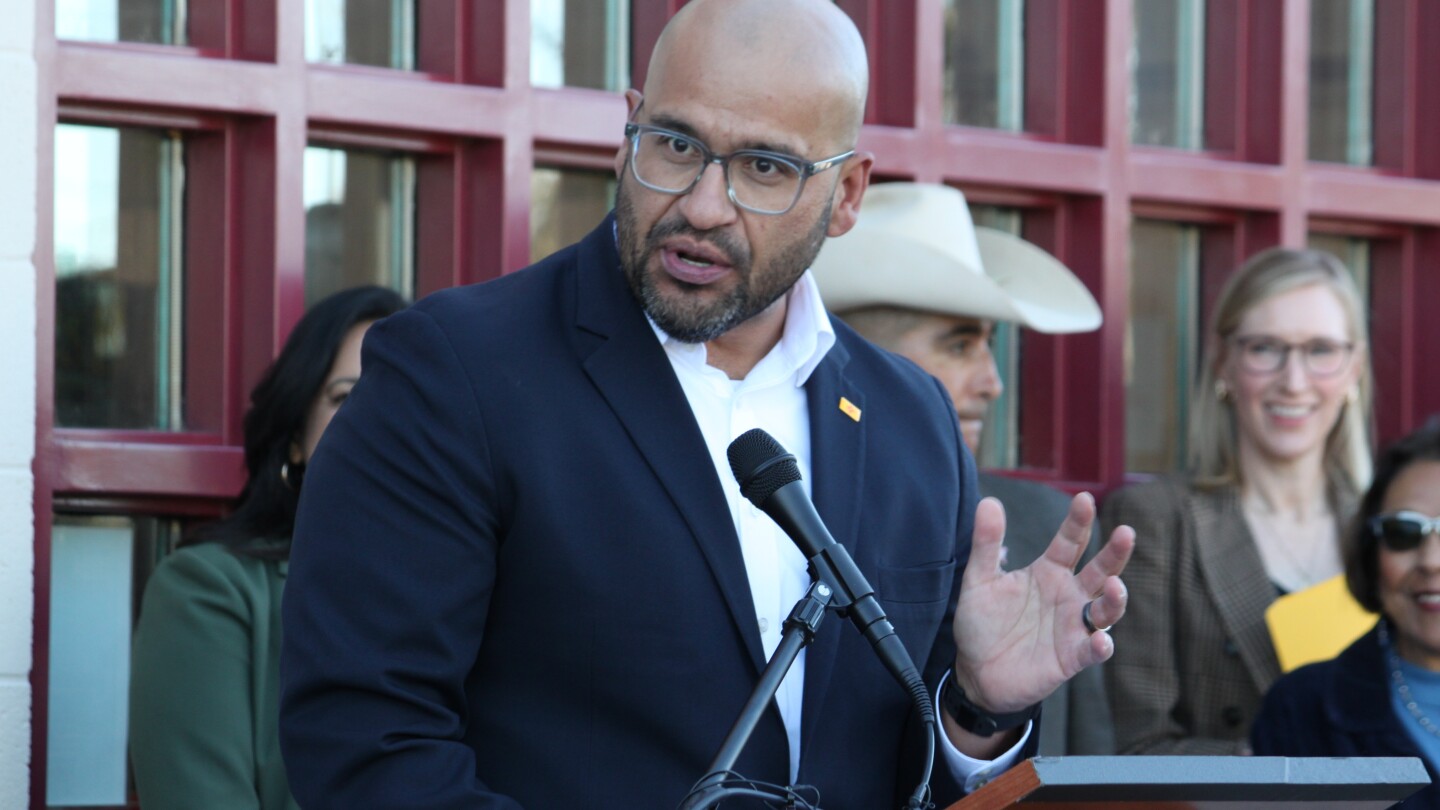
BOSTON (AP) — A federal judge in Boston on Thursday seemed skeptical of the Trump’s administration’s argument that SNAP benefits could be suspended for the first time in the food aid program’s history because of the government shutdown.
During a hearing over a request by 25 Democratic-led states to keep the funding flowing, U.S. District Judge Indira Talwani told lawyers that if the government can’t afford to cover the cost, there’s a process to follow rather than simply suspending all benefits. “The steps involve finding an equitable way of reducing benefits,” said Talwani, who was nominated to the court by then-President Barack Obama.
Talwani said she expects to issue a ruling later Thursday and seemed to be leaning toward requiring the government to put billions of dollars in emergency funds toward SNAP. That, she said, is her interpretation of what Congress intended when an agency’s funding runs out.
“If you don’t have money, you tighten your belt,” she said in court. “You are not going to make everyone drop dead because it’s a political game someplace.”
Talwani acknowledged that even ordering emergency funds to pay for SNAP might still be painful for some SNAP recipients because it could mean they get less money and that the money they do get could be delayed. “We are dealing with a reality that absent a 100% win for you, the benefits aren’t going to be there on Nov. 1,” she told the plaintiffs.
The hearing came two days before the U.S. Department of Agriculture planned to freeze payments to the Supplemental Nutrition Assistance Program because it said it can’t continue funding it due to the shutdown.
AP AUDIO: Judge to consider demand to force the government to keep funding SNAP food aid despite the shutdown
Senate Majority Leader John Thune says he objects to a request by Democrats who are pushing for a temporary fix to the food aid issue. ((Food aid for Americans could expire at the end of the week due to the government shutdown.))
Stay up to date with the news and the best of AP by following our WhatsApp channel.
Other lawsuits have been filed over the program’s suspension, including one filed Thursday in Rhode Island by a coalition of eight cities and community, business and union organizations.
SNAP, which costs about $8 billion per month, serves about 1 in 8 Americans and is a major piece of the nation’s social safety net. Word in October that it would be a Nov. 1 casualty of the shutdown sent states, food banks and SNAP recipients scrambling to figure out how to secure food. Some states said they would spend their own funds to keep versions of the program going.
President Donald Trump’s administration said it wasn’t allowed to use a contingency fund with about $5 billion in it for the program, which reversed a USDA plan from before the shutdown that said that money would be tapped to keep SNAP running. The Democratic-led states argued that not only could that contingency money be used, it must be. They also said a separate fund with around $23 billion could be tapped.
Although the states requested the funding continue only in their jurisdictions, the judge indicated that any ruling would apply nationwide, saying it wouldn’t be fair to treat recipients differently depending on which state they live in. A ruling that would apply everywhere could defy the intentions of the U.S. Supreme Court, which has limited the use of nationwide injunctions, though it hasn’t prohibited them.
Much of the hearing revolved around what Congress intended to do when the agency runs out of money for the program. Talwani pushed back against the Trump administration’s argument that suspending the benefits was the best option, saying using emergency funds for benefits, albeit reduced, seemed to make the most sense.
“It’s hard to me to understand that this is not an emergency, when there is no money and a lot of people are needing their SNAP benefits,” she said.
Lawyers for the federal government argued that dispersing the full benefits would violate a law that bars the government from paying for programs without a congressional appropriation.
And in court papers, the government said partial payments would require complicated recalculations of benefits that could take weeks.
The plaintiffs argued in their lawsuit that failing to maintain the SNAP funding would hurt public health, make it harder for children to learn in school, drive up government health care expenditures and hurt the retailers that rely on SNAP payments.
To qualify for SNAP in 2025, a family of four’s net income can’t exceed the federal poverty line, which is about $31,000 per year. Last year, SNAP provided assistance to 41 million people, nearly two-thirds of whom were families with children, according to the lawsuit.
___
Mulvihill reported from Haddonfield, New Jersey.
-
Uncategorized12 months ago
Bob Good to step down as Freedom Caucus chair this week
-

 Politics8 months ago
Politics8 months agoFormer ‘Squad’ members launching ‘Bowman and Bush’ YouTube show
-

 The Josh Fourrier Show12 months ago
The Josh Fourrier Show12 months agoDOOMSDAY: Trump won, now what?
-

 The Dictatorship9 months ago
The Dictatorship9 months agoPete Hegseth’s tenure at the Pentagon goes from bad to worse
-
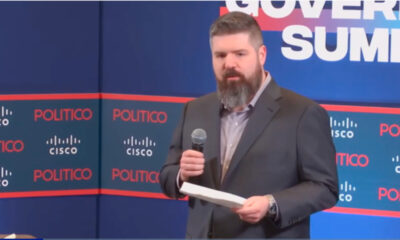
 Politics8 months ago
Politics8 months agoBlue Light News’s Editorial Director Ryan Hutchins speaks at Blue Light News’s 2025 Governors Summit
-

 The Dictatorship9 months ago
The Dictatorship9 months agoLuigi Mangione acknowledges public support in first official statement since arrest
-

 Politics8 months ago
Politics8 months agoFormer Kentucky AG Daniel Cameron launches Senate bid
-

 Politics12 months ago
Politics12 months agoWhat 7 political experts will be watching at Tuesday’s debate



